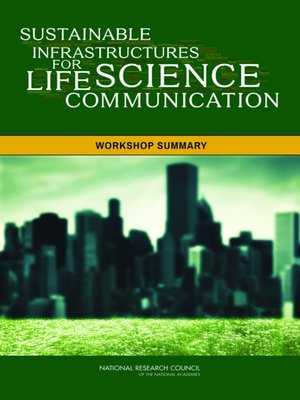Sustainable Infrastructures for Life Science Communication
ebook ∣ Workshop Summary
By National Research Council

Sign up to save your library
With an OverDrive account, you can save your favorite libraries for at-a-glance information about availability. Find out more about OverDrive accounts.
Find this title in Libby, the library reading app by OverDrive.



Search for a digital library with this title
Title found at these libraries:
| Loading... |
<p>Advances in the life sciences - from the human genome to biotechnology to personalized medicine and sustainable communities - have profound implications for the well-being of society and the natural world. Improved public understanding of such scientific advances has the potential to benefit both individuals and society through enhanced quality of life and environmental protection, improved K-12 and undergraduate science education, greater understanding of human connections to the natural world, and more sustainable policies and regulations. Yet few systems of support exist to help life scientist communicators share their research with a broad range of public audiences, or engage the public in discussions about their work.</p>
<p><i>Sustainable Infrastructures for Life Science Communication</i> is the summary of a two-part workshop convened in December 2013 and January 2014 by the National Research Council Roundtable on Public Interfaces of the Life Sciences to identify infrastructure-related barriers that inhibit or prohibit life scientists from communicating about their work and characteristics of infrastructure that facilitate or encourage scientists to engage with public audiences. The workshop featured both formal presentations and panel discussions among participants from academia, industry, journalism, the federal government, and nonprofit organizations. The presentations highlighted the motivations of and challenges to life scientist communicators, theoretical approaches to science communication, examples of different types of infrastructure to support science communication, and the need for building more sustainable science communication infrastructures. This report considers communication infrastructure across a range of life science institutions, including federal agencies, academia, industry, and nonprofit organizations and explores novel approaches to facilitate effective science communication.</p>






